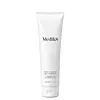What's inside
What's inside
 Key Ingredients
Key Ingredients

 Benefits
Benefits

 Concerns
Concerns

 Ingredients Side-by-side
Ingredients Side-by-side

Water
Skin ConditioningSodium C14-16 Olefin Sulfonate
CleansingSodium Cocoamphoacetate
CleansingCocamidopropyl Hydroxysultaine
CleansingGlycerin
HumectantMandelic Acid
AntimicrobialCitric Acid
BufferingIsopentyldiol
HumectantMaltodextrin
AbsorbentSodium Hydroxide
BufferingSalicylic Acid
MaskingLactic Acid
BufferingTrifolium Pratense Flower Extract
AstringentGarcinia Mangostana Peel Extract
Skin ConditioningPhenoxyethanol
PreservativeCitrus Aurantium Bergamia Fruit Oil
MaskingDisodium EDTA
Lavandula Angustifolia Herb Oil
PerfumingEthylhexylglycerin
Skin ConditioningMentha Viridis Leaf Oil
AstringentPogostemon Cablin Leaf Oil
MaskingLinalool
PerfumingLimonene
PerfumingWater, Sodium C14-16 Olefin Sulfonate, Sodium Cocoamphoacetate, Cocamidopropyl Hydroxysultaine, Glycerin, Mandelic Acid, Citric Acid, Isopentyldiol, Maltodextrin, Sodium Hydroxide, Salicylic Acid, Lactic Acid, Trifolium Pratense Flower Extract, Garcinia Mangostana Peel Extract, Phenoxyethanol, Citrus Aurantium Bergamia Fruit Oil, Disodium EDTA, Lavandula Angustifolia Herb Oil, Ethylhexylglycerin, Mentha Viridis Leaf Oil, Pogostemon Cablin Leaf Oil, Linalool, Limonene
Water
Skin ConditioningCocamidopropyl Betaine
CleansingSodium C14-16 Olefin Sulfonate
CleansingMethyl Gluceth-20
HumectantPPG-26-Buteth-26
Skin ConditioningPEG-40 Hydrogenated Castor Oil
EmulsifyingButylene Glycol
HumectantCimicifuga Racemosa Root Extract
AntimicrobialCamellia Oleifera Leaf Extract
AstringentSilver Citrate
AntimicrobialMenthol
MaskingPEG-150 Distearate
EmulsifyingZea Mays Starch
AbsorbentHydrolyzed Corn Starch
HumectantHydrolyzed Corn Starch Octenylsuccinate
AbsorbentGlyceryl Stearate
EmollientCocamidopropyl Dimethylamine
EmulsifyingPolysorbate 80
EmulsifyingCitric Acid
BufferingTetrasodium EDTA
Chlorphenesin
AntimicrobialMethylisothiazolinone
PreservativeLimonene
PerfumingAngelica Archangelica Leaf Oil
PerfumingCymbopogon Nardus Oil
MaskingCitrus Limon Peel Oil
MaskingCitrus Aurantifolia Oil
CleansingLavandula Hybrida Oil
EmollientCitrus Aurantium Dulcis Peel Oil
MaskingPrunus Armeniaca Kernel Oil
MaskingParfum
MaskingWater, Cocamidopropyl Betaine, Sodium C14-16 Olefin Sulfonate, Methyl Gluceth-20, PPG-26-Buteth-26, PEG-40 Hydrogenated Castor Oil, Butylene Glycol, Cimicifuga Racemosa Root Extract, Camellia Oleifera Leaf Extract, Silver Citrate, Menthol, PEG-150 Distearate, Zea Mays Starch, Hydrolyzed Corn Starch, Hydrolyzed Corn Starch Octenylsuccinate, Glyceryl Stearate, Cocamidopropyl Dimethylamine, Polysorbate 80, Citric Acid, Tetrasodium EDTA, Chlorphenesin, Methylisothiazolinone, Limonene, Angelica Archangelica Leaf Oil, Cymbopogon Nardus Oil, Citrus Limon Peel Oil, Citrus Aurantifolia Oil, Lavandula Hybrida Oil, Citrus Aurantium Dulcis Peel Oil, Prunus Armeniaca Kernel Oil, Parfum
 Reviews
Reviews

Ingredients Explained
These ingredients are found in both products.
Ingredients higher up in an ingredient list are typically present in a larger amount.
Citric Acid is an alpha hydroxy acid (AHA) naturally found in citrus fruits like oranges, lemons, and limes.
Like other AHAs, citric acid can exfoliate skin by breaking down the bonds that hold dead skin cells together. This helps reveal smoother and brighter skin underneath.
However, this exfoliating effect only happens at high concentrations (20%) which can be hard to find in cosmetic products.
Due to this, citric acid is usually included in small amounts as a pH adjuster. This helps keep products slightly more acidic and compatible with skin's natural pH.
In skincare formulas, citric acid can:
While it can provide some skin benefits, research shows lactic acid and glycolic acid are generally more effective and less irritating exfoliants.
Most citric acid used in skincare today is made by fermenting sugars (usually from molasses). This synthetic version is identical to the natural citrus form but easier to stabilize and use in formulations.
Read more about some other popular AHA's here:
Learn more about Citric AcidLimonene is a fragrance that adds scent and taste to a formulation.
It's found in the peel oil of citrus fruits and other plants such as lavender and eucalyptus. The scent of limonene is generally described as "sweet citrus".
Limonene acts as an antioxidant, meaning it helps neutralize free radicals.
When exposed to air, oxidized limonene may sensitize the skin. Because of this, limonene is often avoided by people with sensitive skin.
The term 'fragrance' is not regulated in many countries. In many cases, it is up to the brand to define this term. For instance, many brands choose to label themselves as "fragrance-free" because they are not using synthetic fragrances. However, their products may still contain ingredients such as essential oils that are considered a fragrance.
Learn more about LimoneneSodium C14-16 Olefin Sulfonate is a cleansing agent made from a mixture of long chain sulfonate salts. It can also help produce foam.
This ingredient may be drying. We recommend speaking with a professional if you have concerns.
Water. It's the most common cosmetic ingredient of all. You'll usually see it at the top of ingredient lists, meaning that it makes up the largest part of the product.
So why is it so popular? Water most often acts as a solvent - this means that it helps dissolve other ingredients into the formulation.
You'll also recognize water as that liquid we all need to stay alive. If you see this, drink a glass of water. Stay hydrated!
Learn more about Water